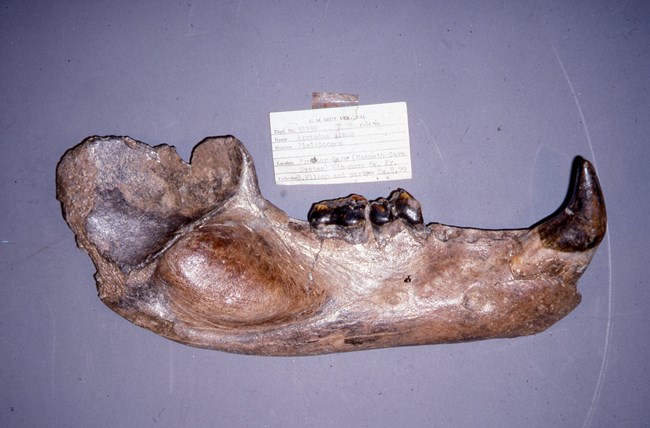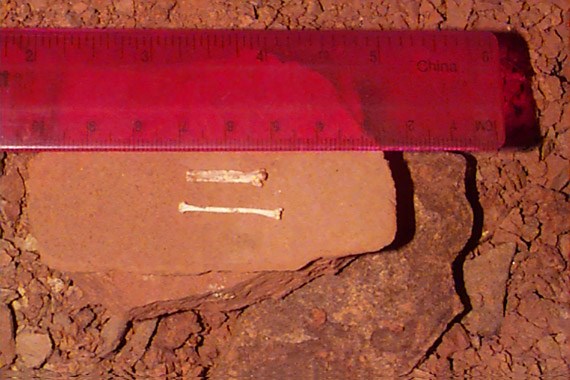
NPS Photo Mammoth Cave National Park preserves fossils from two different time periods in Earth's past, separated by millions of years. We can organize them into two categories: Paleozoic bedrock fossils and Cenozoic cave fossils. 
NPS Photo Paleozoic Bedrock FossilsThe 300-325 million year old Paleozoic limestones, sandstones, and shales that make up the sedimentary bedrock layers of the Mammoth Cave region formed in a depositional environment very different from what we see today. Limestone formed at the bottom of a shallow saltwater sea now known as the Mississippian Sea. Fossils found in our limestone layers reflect the environment at that time and include typical Mississippian Period sea creatures like corals, crinoids, brachiopods, gastropods, and sharks. 
NPS Photo MACA 00002040 As sea level lowered, the shoreline shifted, and changed the local environment to a sandy river delta at the mouth of an ancient river. On top of the limestone, layers of sandstone and shale formed from sediments laid down by this extinct river, which is now referred to as the Michigan River. Fossils found in our sandstone and shale layers embody the near-shore and land environment, and include ancient plants typical of the Pennsylvanian Period, like scale-trees, ferns, and horsetails. 
NPS Photo Cenozoic Cave FossilsAs the cave was hollowed out of the bedrock over the last several million years, the cave's halls and many sinkhole entrances accumulated fossil bones along with sediment weathered from the surface. Remains from animals that wandered, washed, or were dragged into the cave, can now be found as fossils from the Pliocene, Pleistocene, and Holocene epochs. Interestingly, some of the animals we would recognize today, but overall, the cave fossils are quite varied. They represent animals that lived in the local area throughout changes in the climate (warmer interglacials and colder ice ages). Hellbender (a large aquatic salamander) remains from old cave stream gravels were deposited between 2 and 5 million years ago, and leg bones of an extinct vampire bat were deposited around 2 million years ago. Bat guano deposits have also been discovered from free-tailed bats. These bats would have had “bats flights” from the Historic Entrance that could rival those seen at Carlsbad Caverns today, however, we are tens of thousands to hundreds of thousands of years too late to see them. 
NPS Photo A deposit from a former entrance that accumulated during the last interglacial period contains remains of an extinct large armadillo. Another former entrance contains remains of a giant short-faced bear, a mastodon, and a sabre-toothed cat. Younger fossils (hundreds to thousands of years old) represent bears, raccoons, woodrats, and many bats that utilized the cave before humans started to visit it. Ongoing research will undoubtably uncover more fossil remains, but so far, no mammoths have been found in Mammoth Cave! New Research and DiscoveriesPaleontology of Mammoth CaveParks Have a Rich Fossil HeritageFossils and Paleontology |
Last updated: January 31, 2024
